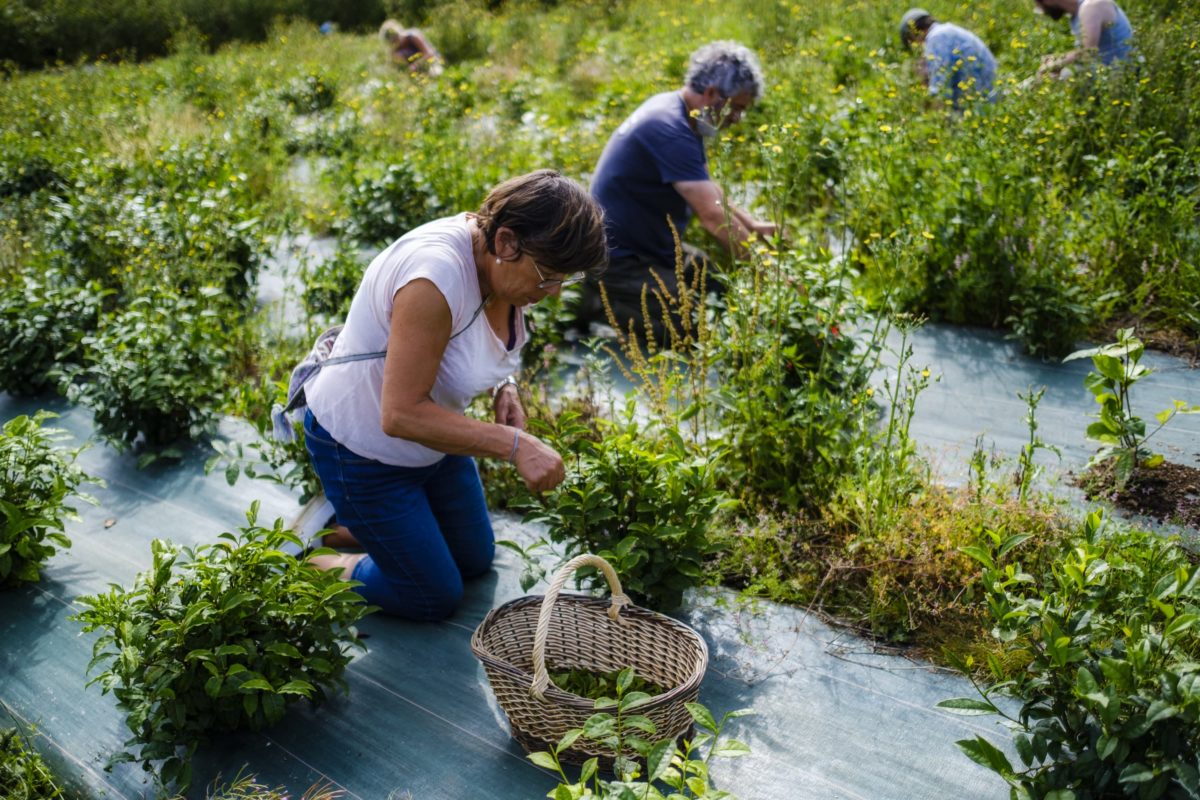
Tea at Kérouzéré Mill
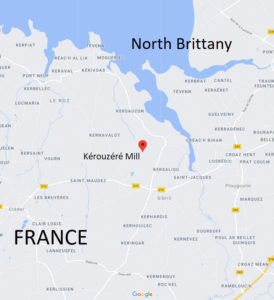
Land and sea bicker over the Léonard region, whose weather will seem harsh to newcomers. In North Brittany, in the Finistère department the coast is washed all year round by wind and waves, and when the sun shows its warming rays, it is only to disappear a few moments later. When you look closer, you will realize how generous and welcoming this region is: it just takes a few miles inland to find its hidden gentleness. Roughness and gentleness, then, but also wealth, thanks to intense maritime commerce around linen and hemp that started in the 16th century, and vegetable growing from the 19th century onwards. Shipowners’ houses and parish closes remind the visitors of this munificent past. Parish closes enclose a church, a calvary (a public crucifix), and a cemetery between walls. Built in the 16th and 17th centuries in the baroque style, they constitute an exceptional sign of wealth for such tiny villages. The Léonard region has been considered as a land of plenty for centuries now; but who would have thought that a tea perfectly expressing the alliance between land and sea would grow from its soil?
Two men on a patch of land
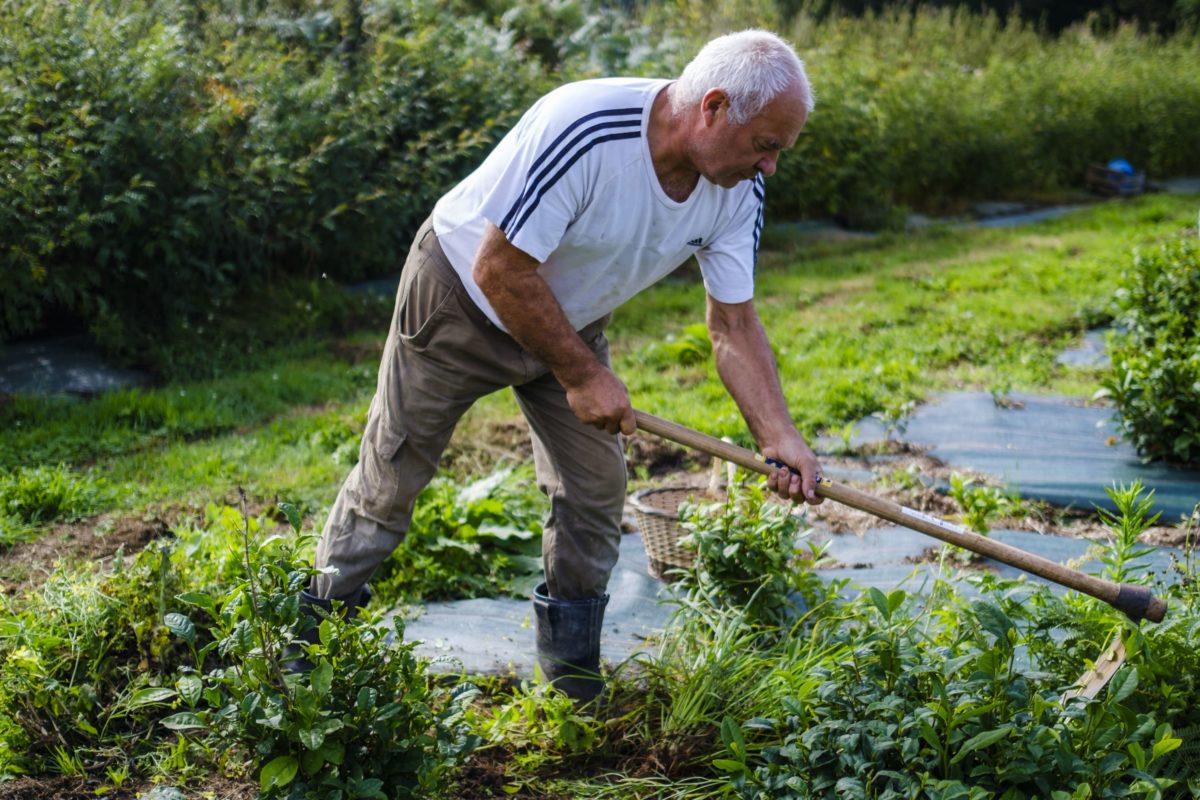
Michel Thévot
This former coppersmith, born in the Loire valley, has always been passionate about plants, to the point that he also became a horticulturist. He first discovered camellia sinensis while traveling in the Yunnan region of China in 1999.
Michel Thévot and his wife bought the mill that formerly belonged to Kérouzéré Castle. Constructed in the 15th century, it was in ruins at the time. They decided to devote themselves to an ambitious project: return the mill to its former splendor — and its initial purpose, by restoring it and creating a botanical garden over the seven-hectare piece of fallow land that surrounded the mill.
Thirteen years of patience, hard work, and friends’ support later, the mill’s wheel is in motion and more than 2,400 plant species, including 600 camellia varieties, grow on the river Guillec’s banks. In 2018, the botanical garden welcomed a new species: the camellia sinensis sinensis. 2000 camellia plants were planted in order to produce a locally grown Britton tea. And to make sure that this bold initiative would succeed, Michel Thévot called in another man from the Loire valley.
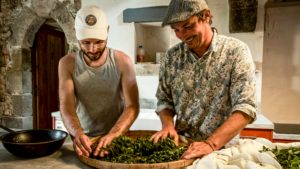
Emile Auté
Just like Michel Thévot, Emile Auté has lived several lives. Originally trained as a bartender and restaurant manager, he started to concoct stunning cocktails with tea and flowers in his bar in Cognac. He then went a step further in 2015 and opened a tea house in Vendôme, in the Loire valley, specializing in scented teas. Opening a tea house might be a regular business, but creating scented teas with locally grown ingredients is another kettle of fish. This first step led him to another experiment: becoming a tea farmer, or as he calls it himself, a “tea peasant”. He traveled to Asia and in particular to Vietnam to learn about growing and manufacturing tea.
A land “blessed by the gods”
It is in the botanical garden at Kérouzéré Mill, on this land “blessed by the gods”, as Thévot says, that he decided to become a tea farmer. His 600 camellia varieties and other exotic plants were proof of the exceptional quality of the land: it benefits from temperate, mild winters thanks to the combined influence of the sea and the Gulf Stream, while a granitic soil, satisfactory amount of sunshine, and level of humidity provide the ideal conditions for growing tea plants. He chose a large, mildly sloped, east-facing underwood patch, cleared it, and planted seedlings that had grown out of 2000 camellia sinensis sinensis seeds.
One year later, in 2019, the tea plants had acclimatized and grown so well (without any further soil-enrichment measures!) that a first harvest took place. In 2020, four harvests were made between April and June, then a fifth harvest in September, for a total amount of 20 kg of tea leaves, that is to say, 3 kg of manufactured tea, per harvest.
Discovering a multi-faceted “terroir”
From the Britton soil, Chinese tea plants and manufacturing process developed by Auté emerges a complex flavor palette whose unique aromas make this tea emblematic of its region of origin: white tea, green tea, honey-steamed black tea.
The tea leaves are hand-processed: they are first withered for several hours, in the shade or exposed to sunlight depending on the weather and the time of the year, then rolled and slightly roasted using a wok, and finally left to dry. Other methods inspired from Japanese techniques were also tried out.
Curiousitea founding director Benjamin Sieuw’s tea tasting review illustrates the soil and sea evocative flavors of Kérouzéré Mill’s teas:
White Tea
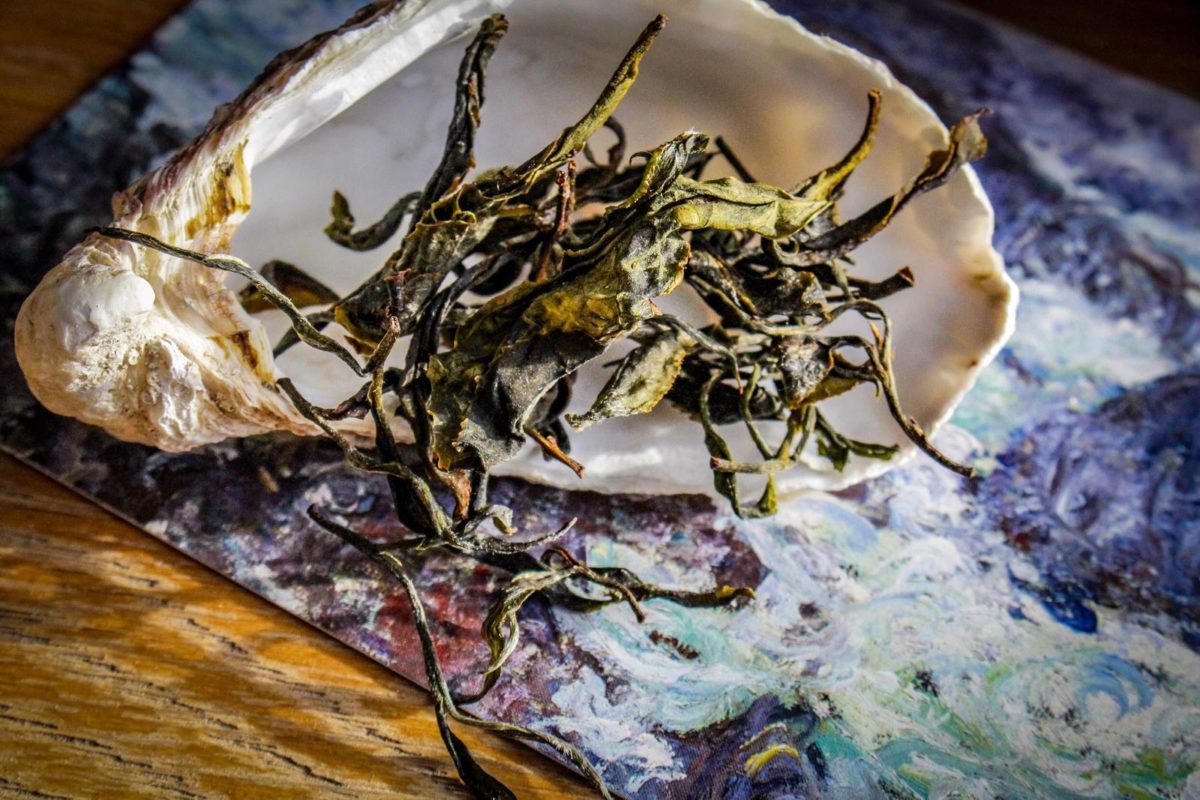
This tea offers a two-edged bouquet, rich and fruity, with a mineral hint. It evokes alluring fragrances such as brown sugar, black fruit or prunes, reminiscent of a delicious Britton far (a traditional Britton dessert with prunes, ed.). Its mineral dimension reveals itself through aromas reminiscent of steep stone cliffs, sand and seashells warmed by the sun. Its discreet maritime hints emerge when steaming the dry leaves: their fragrance is close to that of black seaweed.
The taste is complex: a floral top note, followed by a body that falls along the lines of gourmet flavors, and an ending note rather mineral and subtly iodized.
Honey-Steamed Black Tea
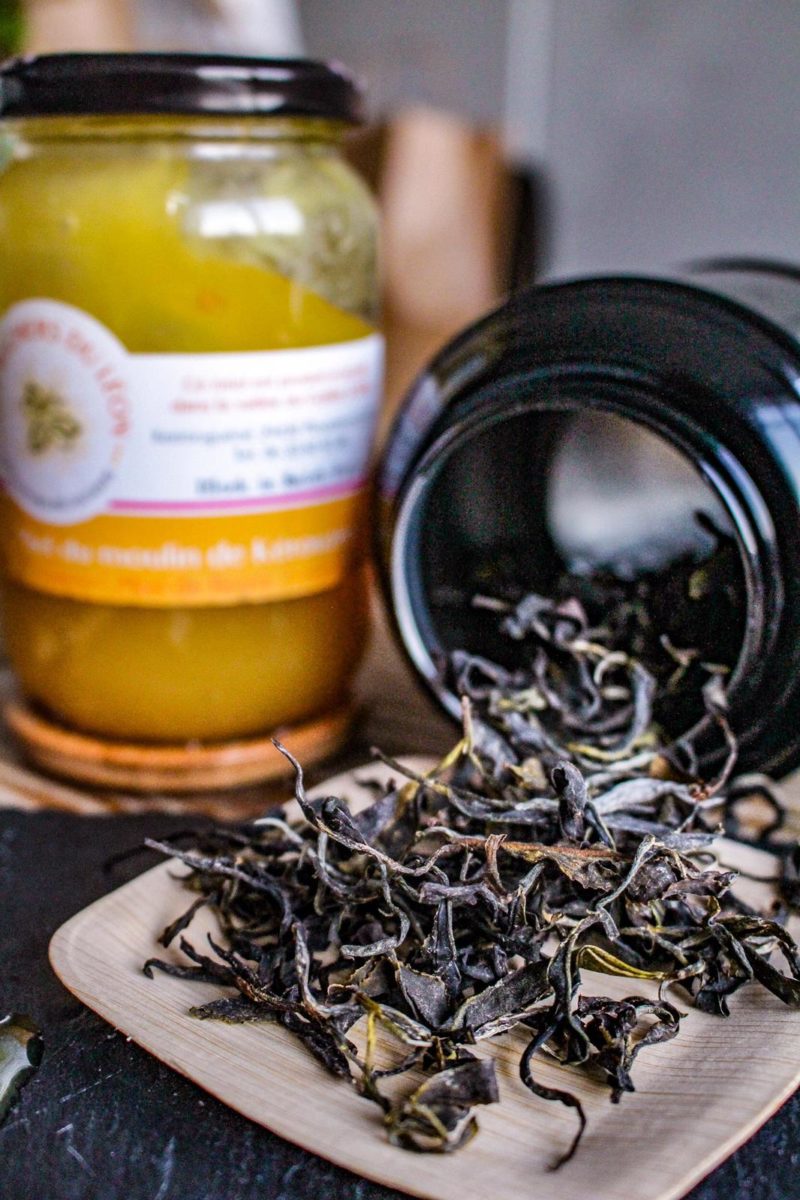 At the heart of the Guillec Valley, Michel Thévot allowed a beekeeper, Patrice Appere (Les ruchers du Léon), to set up 22 beehives on one of his patches of land. The botanical garden truly is a paradise for the bees, who can forage rare and fragrant flowers like eucryphia or Lomatia, two varieties from New Zealand.
At the heart of the Guillec Valley, Michel Thévot allowed a beekeeper, Patrice Appere (Les ruchers du Léon), to set up 22 beehives on one of his patches of land. The botanical garden truly is a paradise for the bees, who can forage rare and fragrant flowers like eucryphia or Lomatia, two varieties from New Zealand.
Emile Auté, who is never short of surprising ideas, decided to marry the tea and honey produced locally by steaming the tea leaves with this complex, aromatic honey.
The tea resulting from this honey-steaming process is the epitome of gourmet flavors: its sugary fragrances evoke French cake recipes, such as nonnettes (small gingerbread cake made of honey and usually orange marmalade, ed.) or kouign-amann (traditional Britton cake made of caramelized bread dough, sugar and butter), but also fragrant cocoa.
During tea-tasting, gourmet notes are followed by a distinct but delicate white flower flavor. The ending note is, as expected, that of honey, while the after-taste is reminiscent of dry straw, with slight astringency.”
One thousand new tea plants will be added in 2021 and machines imported from China will help manufacture the leaves. The plantation undoubtedly has a bright future, as its white tea, plucked in 2020 during the first harvest of the year, was awarded a bronze medal at the AVPA’s world teas international contest (Agency for the Valorization of Agricultural Products, an NGO whose aim is to promote and support exceptional agricultural products and producers, ed.). Along with Filleule des Fées, another tea plantation located in the Morbihan department, just a two-hour drive South from Kérouzéré, these exceptional tea gardens are yet another reason to come and discover Brittany.
Tea Market
Get More Value from Your Tea: BRU Maker One
+41794574278
Jacque's Organics
(647) 804-7263
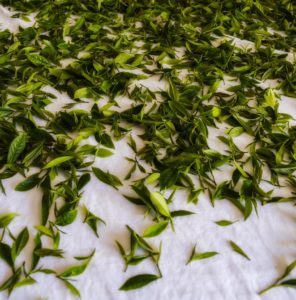
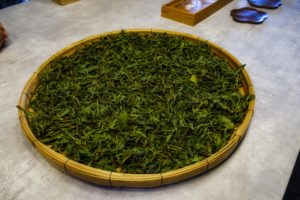
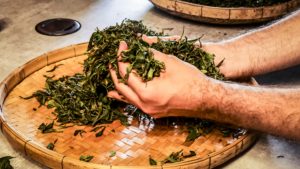
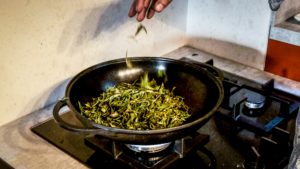

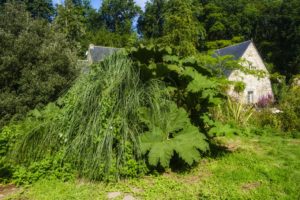
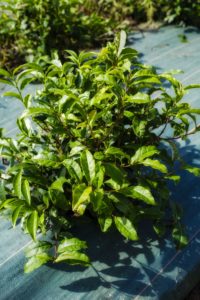
Oh la la! I am trying to imagine the honey steamed tea….and how you did that? Then I started imagining wild blackberries, etc. Tea is wild and creative. pwinchester
Hi Paula ! I like your “oh la la ” ! The honey steamed tea magician is Emile Auté. He’s inspired by the oolong process. He is very attached to the notion of terroir. In his tea plantation in the Loire valley (an article is planned on this subject later this year), he cultivates a lot of plants and fruits to mix them with his teas (so that he gets a 100 % french terroir product). He is also experimenting with a tea made with steamed milk from local cows. You’re absolutely right, tea is wild and creative !